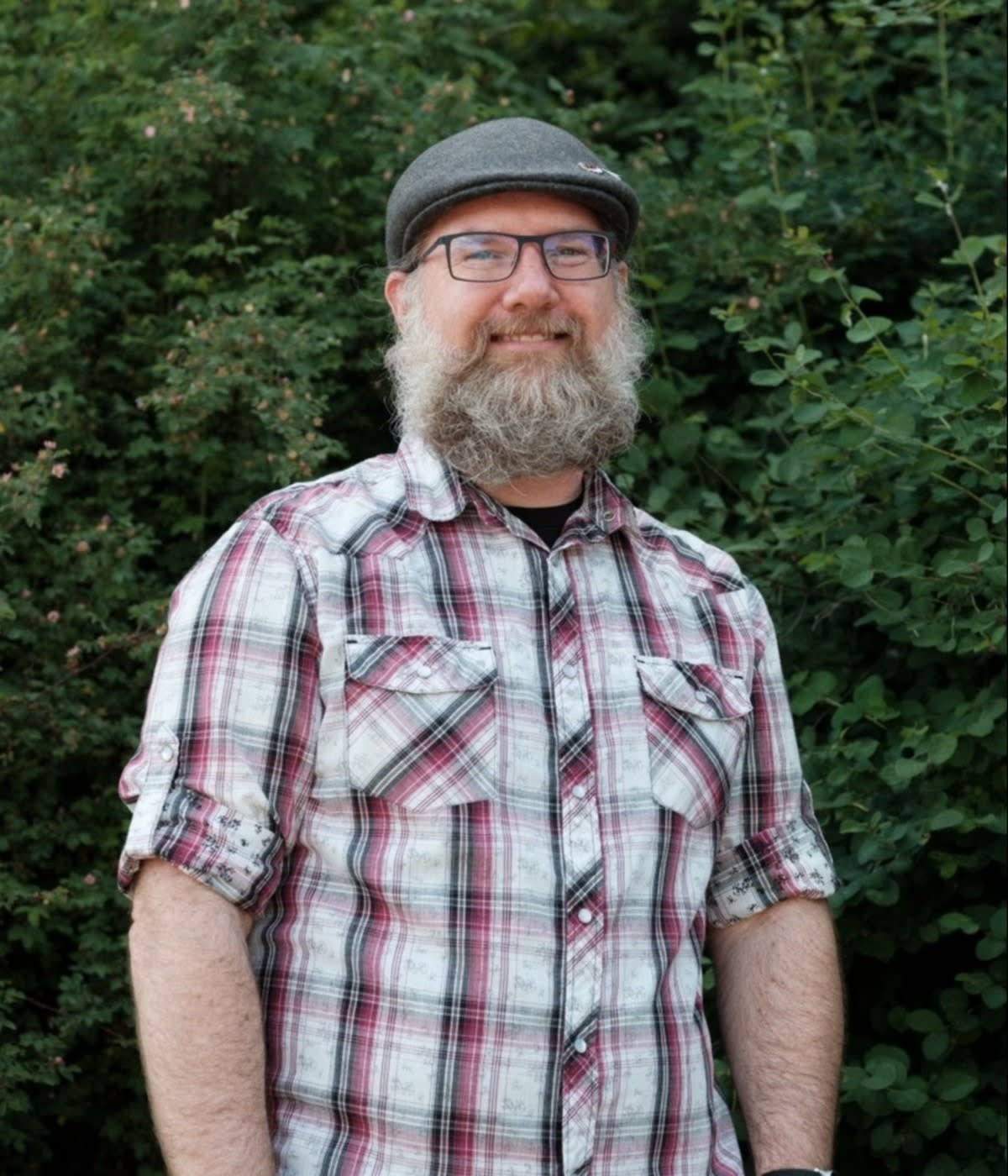Also on The ReadME Podcast
Changing the hardware development game at Adafruit
When I was at school, I started getting wrist pain from typing, so I took a break and focused on hardware. I loved to publish some of my projects, like DIY MP3 players and synthesizers—and people would email me to ask if I would send a kit of parts so they could build them, too. I was so drawn to this idea of sharing and having a community of people who connect and create cool projects together. Not publishing isn’t as much fun, and feels detrimental to the community. I totally get the fear of giving up your special sauce, but there’s really no point in keeping it a secret.
Once I graduated, I set up a system on PayPal, and kept designing projects on the side of my engineering job. Then I got an artist’s fellowship to make open source hardware and software in New York at Eyebeam. After that, I realized I could probably make the side gig work full time.
That was 15 years ago. Now Adafruit has almost 100 people on staff, and a 50,000-square-foot factory in New York. Every day, we’re looking for the most interesting, useful electronics, and then publishing the code and tutorials to go with them. I observe and see what people are up to in various communities, and help them find solutions.
Before, even just to make your own website, you had to write your own HTML, JavaScript, and CSS. Now you can go to Glitch or Processing 5 and just make something. It’s instant and amazing how much easier and available and free it all is. I see kids who are the same age I was when I started—but they can make more interesting, complicated projects because the support is so much better. People always say they want hardware to be like Legos, and now it is: You can get a bunch of pieces and plug and play to create physical manifestations of your ideas.

Keeping the doors open for innovation
We have upwards of 1,500 GitHub repositories at Adafruit, and I’m on all of them. People from the community open issues and make contributions and suggestions, so we’re constantly iterating and making things better, so I like to think of ourselves as a useful resource. If it’s closed source, everyone’s constantly redoing everything and sharing nothing. You never make progress because everyone has to reinvent the universe from the first principles in hardware, every time.
The Arduino project created this layer of compatibility that empowered multiple hardware vendors to agree on a standard to the best of their competitive ability. Obviously they’re all still competitors, but it lets them compete on what you get for your money—not what you get to do with it afterwards. Imagine if every car used different tires. We’d survive and society would continue, but it would be so frustrating to always have to find that one specific tire for your car. Now that we have standard tire sizes, it allows manufacturers to be creative, and is much more convenient.
Doing that for hardware, and for the firmware that runs on hardware, is important because companies that make hardware don’t specialize in software. They all seem stuck in ‘90s programming paradigms. On the software side, they’ve figured out how to build on each others’ work in order to make progress. And I want to get hardware to that state.
We’re getting closer. Previously, every vendor had their own software tool chain, and the licensing was incredibly restrictive. I still have some projects that use a single header file, and since it’s under NDA the entire project can’t be open sourced. The bad news is that these old proprietary projects have become stuck. The good news is that views of open source are evolving. Multi-billion dollar companies are starting to embrace open source licenses because they realize their customers can’t constantly be reinventing software. Once one company started doing it, everyone realized that open source is needed to stay competitive. So now open source can be a market advantage.
Prioritizing a caring, respectful community
I work on both the engineering and business side of Adafruit, and they’re totally separate skills. Hiring people is nothing like compiling code. And solving interpersonal issues or business conflicts has nothing to do with fixing a merge conflict. Often, the non-coding side is trickier.
It’s not 100% of the time, but typically the personality of the company reflects the personality of the founder(s). For example, when you think about a company like Microsoft, the personality of Satya Nadella is currently the personality of Microsoft. The things that are important to him are important to the company.
When your leadership has good ethical and moral guidelines, it reflects on the entire company and has the power to inspire your people. Of course, the lack of such guidelines can demoralize your people. So it’s important to set the stage early on, because it can be very challenging to separate that later.
At Adafruit, we care a lot about the community, which means we have zero tolerance for bad actors. There are people who don’t like that, and that’s fine, they can find another community. I just have no patience for folks who want to show up and be rude. Sometimes I’ll give people one warning, but I don’t give them two. It helps to have a bouncer mentality. Nobody likes to be bounced out of a club, but everybody else in the club is happy when that super drunk, obnoxious person is gone.
It’s tough because there’s a strong culture in America around the idea that the customer is always right, and we should all just be nice to one another. But you have to honor the space and time of our contributors, and we’re very quick to ask disrespectful people to leave.

The inspiring, varied Adafruit community
At Adafruit, I’m so proud that we’re enabling people with incredible ideas to quickly make their thoughts and dreams come true. I don’t always get to *make* end projects, but I do get to see them. For example, Disney has infinite money, but they used open source code from Adafruit for the special effects in a Disney+ show. That’s so neat.
Hardware itself is not copyrightable the way firmware and software is, so for hardware files that we post on GitHub we license things for clarification: it’s the intent that matters to us and the people who make derivatives. We see people using our hardware to start a business, do cosplay, support space exploration, make special effects, build assistive technology—and it’s all amazing. Seeing these communities use Adafruit as part of their palette to create completely different things is incredible.
For assistive tech especially, a lot of people have very specific needs, so open source is really handy because they can prioritize customizability. We see people make a wheelchair controller, or an eye-blink sensor to detect when somebody’s winking or blinking.
Other companies manufacture items that do this, but it’s often outside the range of folks who need it. Some people can afford it, but often the people who need the technology and the people supporting them are not savvy engineers. It’s partly about democratizing information, but also about spreading out technology so more people can use it, and more people can get exposure.
For the last 10 years, we’ve been doing a weekly show on Wednesdays so people can show off their engineering projects. One day, I had my friend Amanda talk about biomedical engineering products. After, we had a customer email us to say that he watched with his 10-year-old daughter and at the end of the show, she turned to him and said, “That was really fun. Are there any boy engineers, or are all engineers girls?” It was amazing. For five seconds, this girl had this incredible image of the world, and that’s so cool.

Evolving to a new way of open source
Open source is viral, not because of licensing, but because it’s free and easy to use. The community is moving from the early internet, ‘90s philosophy to a newer way of interacting and developing software together. It’s creating a bit of healthy friction and forcing us to look at our culture and the assumptions that we make as developers to ensure that the community we’re building is the one we want.
There’s no right or wrong answer. There are people who don’t fit well within the Adafruit community and that’s totally cool. It’s nothing personal against them. There’s room for everyone. It’s about figuring out how we all work together to create something larger. It’s an amazing human thing to be able to collaborate, and some people also might want a dictator for life. But what happens if we try to manage development by community? How does that work?
And the thing is, nobody writes code perfectly. On our Circuit Python project, our lead developer Scott has this philosophy to “break it and get it over with,” because it’s inevitable. At first it was traumatic for me, but then I realized that if you assume you’ll have more users in the future—which is a pretty healthy mindset for most successful projects—you’re better off breaking it early. When I think about going from Python 2 to 3, it was so hard. But you break it and move on, and remember that (hopefully) you’re going to have more users in the future than in the past.
We recently re-standardized the physical shape of our boards, and of course there were people who pushed back because they were used to previous sizes. But I explained why we made the change and shared that the files for the previous size were on GitHub if they needed them, and the certainty of that decision calmed things down.
For me, when developers get into this loop of indecision, it causes instability for them, their code base, and their developer community. But if you can make the decision, acknowledge the downsides, explain why the pros outweigh the cons, and then move on, it’s gonna be better for everyone. Being a developer exposes you to this fragile duality of dealing with computers and humans. It’s about that goal of perfection and then at the same time, also managing human expectations, desires, needs, and wants, with no boundaries.





